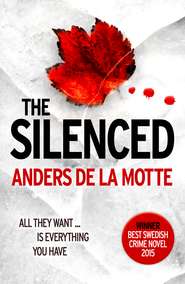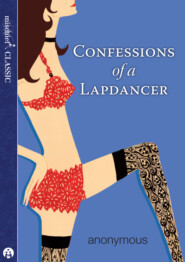По всем вопросам обращайтесь на: info@litportal.ru
(©) 2003-2025.
✖
We Are Not Such Things: A Murder in a South African Township and the Search for Truth and Reconciliation
Настройки чтения
Размер шрифта
Высота строк
Поля
Rhodes opened the back of the van and, together with Evaron, loaded Amy onto the cold metal floor. Sindiswa and Maletsatsi followed, letting out escalating howls. Rhodes’s instinct was to ferry Amy to certain safety, so instead of driving to the nearby hospital, he called an ambulance to meet him at the police station down the road.
Back at the station, he parked near the rear, close to the strip of holding cells. He opened the back of the truck. There Amy lay, her eyes closed and her breathing shallow. Rhodes touched her face; she didn’t respond. Evaron picked her up, a limp 117 pounds, deadweight, and set her on the asphalt beneath a low tap. Rhodes went to fetch a sparse first-aid kit from the office.
As Evaron, Sindiswa, and Maletsatsi clasped each other, Rhodes washed Amy’s face, hoping to see the damage beneath the blood. He cradled her head and pushed her tangled hair away—so long, he kept thinking. He wrapped some gauze around the wound above her brow. He took a scratchy, gray government-issue blanket from a nearby holding cell and stretched it across her body. Maletsatsi, Sindiswa, and Evaron hovered nearby. How would they tell Amy’s mother and father about this terrible beating? Surely Amy would be hospitalized for a week or two, considering the severity of her injuries. Would her parents have to fly across the ocean? And what about Amy’s valuables—the backpack, the old Mazda itself? And where were the doctors? And why was she still lying on the pavement and not on her way to the hospital?
Victor West, a young paramedic, had been sitting in his ambulance a few miles away, chatting with his partner, when the radio cackled.
“Make your way to an urgent assault case, NY1 at the Caltex garage,” came the warbled voice.
Urgent assaults were the name of the game in the Cape Flats townships where West had operated for years. To dull himself after picking up dead or nearly dead bodies from shootings and knife fights and domestic brawls, West was drinking two shots of brandy every morning before his shift and four shots after his shift. Every day, he was called to at least ten assault cases, usually including one stabbing: young people were the perpetrators and the victims. West switched on his lights and siren and headed toward Gugulethu.
“Patient is now at the Gugulethu police station,” the dispatcher updated him.
Traffic was heavy, as residents of the townships headed home in dilapidated minivan taxis, in the back of pickups, in private cars. The men wore the blue jumpsuits of manual laborers—literal blue-collar workers—and the women wore their maid costumes—typically a button-down knee-length cotton dress with a small apron and a matching head scarf. They piled into and out of buses and vans. The ambulance hooted and swerved, making its way past the cars slowly. The streets were littered with the detritus of protests and rallies, bits of burned tire and rubbish.
It had been thirty minutes since the radio first cackled when West finally reached the police station. He and his partner navigated through a throbbing crowd that had gathered by the gates. The paramedics pulled up to the interior courtyard. Police were milling around, and three agitated young people stood over a form covered in a gray blanket, lying on the cement near a corner of jail cells. West hopped out of the ambulance and rushed over.
“We lifted the blanket and we were shocked to see a white person,” West recalled when I met him at a mall restaurant in the upscale suburb of Claremont in 2012. Amy had been, he would later say, “the cherry on top” of the general trauma of his work; a few years later, he was hospitalized for post-traumatic stress disorder and alcohol addiction. He was long sober now, a round-faced man with jet-black curls, pale café-au-lait skin, and a toothpaste-commercial smile, who, with his wife, ran seminars for at-risk kids in the down-on-its-luck colored neighborhood in which they lived. How strange, he thought on that August 1993 day, how really unusual to see all that wet blond hair in tangles. West bent down and pressed his hand to Amy’s wrist and then her neck, searching for a pulse. Nothing.
He examined her bloodied body and found what Rhodes had not: in addition to the crack above her brow, she had suffered two large fractures on the back of her head and a deep stab wound in her chest.
“What struck me most is that she had long boots on,” West recalled nineteen years later. But his memory, which seemed to him so sharp and true, was flawed. In fact, the medical examiner’s photographs show that Amy was wearing black lace-up oxfords with a 1990s-style square toe and square heel.
“Is she okay?” Evaron asked. Maletsatsi and Sindiswa stood behind him. Shouldn’t she be taken immediately to the hospital? And then shouldn’t someone call her parents? What about her car? The women were becoming increasingly hysterical, and had begun to shout questions. The paramedics didn’t answer. They pulled the blanket over Amy’s damp, unmoving face.
That evening, after Amy’s friends had gone home, a contingent of gruff police officers swept into the small station, questioning everyone, the cops even, taking over rooms and telephones. These men, with their jowls and barrel chests and packs of quickly disappearing cigarettes and bottomless cups of black coffee, were the Riot and Violent Crimes Investigation Unit, and they would begin the inquiry into Amy’s murder.
The big bosses were not thrilled about this particular crime; the entire nation was already experiencing an extended anxiety attack over the threat of mass race-based violence, and now this? The top brass was prepping for a major governmental transition, and everyone was hoping to avoid bloodshed. Nelson Mandela and other political prisoners had been freed in 1990, after twenty-seven years. Soon thereafter, he and his comrades conducted protracted negotiations with the apartheid leadership, with the end goal of free, democratic elections in which people over eighteen of all races could vote. Everyone recognized that in a country with, roughly, a 10 percent white population and a 90 percent nonwhite population, free elections would mean the end of minority rule. The country remained in flux.
Foreign governments disapproved of apartheid and so South Africa had been subject to trade and arms embargoes. The country’s leadership and its white citizens had become global pariahs. Apartheid had become the cause du jour among American and European pop stars and actors. Mandela was an international hero and, despite laws and legal titles, his influence extended to most black South Africans, as well as a growing number of white, colored, and Indian South Africans. Anti-apartheid political violence was spiraling. Protests, strikes, and rallies were being held almost daily. President F. W. de Klerk of the National Party could see the writing on the wall. The regime, which had recognized that Mandela was their best shot at a bloodless power handover, was negotiating with their former enemies. The ranks of the ANC were growing. In a March 1992 referendum, nearly 70 percent of the all-white electorate had voted “Yes” to allow a process that would ease negotiations toward the dismantling of apartheid.
The election, which Mandela’s African National Congress would handily win, was to be held in April 1994, in eight months’ time. But in late 1993, that seemed unimaginably far away. The country balanced on a precipice; the smallest tilt and it risked collapsing into all-out civil war. Far-right white-power groups were preparing for Armageddon, and more moderate whites were panicking about how they would survive black leadership; many whites were nervous that payback was coming, and that all semblance of order would break down when that payback arrived. And while it is clear, in hindsight, that democracy was on its way, the black population was deeply distrustful of the status quo power structure and often suspected the media of spreading propaganda, as it had done for decades. They were nervous that they would be hoodwinked and would never truly see freedom, and so they continued mounting protests and rallies. For years, the apartheid government had fomented violence in black areas; the government had surreptitiously provided assistance to certain black political groups and vigilante mobs that warred against each other. Now the government had a situation—in part of their making, if indirectly—that needed to be contained, and quick. A dead white girl was bad. A dead white girl killed by a black mob was very bad. A dead pro-ANC white girl killed by a black mob was very, very bad. The absolute worst, however, was this: a dead white girl with ANC sympathies killed by a black mob, and the girl was, of all things, American. South Africa was hoping to reinvent itself in the national and international media, and this did not augur well. Within two days of Amy’s death, a gunman attacked a bus running from Cape Town to Pretoria, and the Cape Times headline read SA WORLD’S MOST VIOLENT COUNTRY. The pressure was on.
As the sky grew dark, the detectives set up their satellite offices and barked to each other. Ilmar Pikker, a hulking chain-smoker with a curly red beard, headed up the investigation. He was a workaholic with a taste for meat, fried food, and Camel cigarettes. He loved the force more than life itself, every night rounding up punks, kicking in rickety doors, staking out terrorist meet-ups. Back then, he didn’t have a complicated relationship with his job.
Journalists began to slink around outside the station, alerted to a possible cover story by the staticky noise on the police radios. In Gugulethu, the news passed from neighbor to neighbor. Those boys, they killed a white lady, they ran her down, they beat her to death by the gas station, they stabbed her. She was walking around, one witness recalled, “like a Barbie covered in ketchup.”
Some township residents were buoyant, some blasé. Some were watching the news on TV with great interest. A few were busy pawning Amy’s watch and books. Some took off for their auntie’s place one township over because you knew the cops would come making trouble any minute now, so let them pick up some other kid. Since Amy had spent time socializing and working in Gugulethu, some residents remembered seeing her smiling face; she looked like a nice person, and it was a shame that they had killed her like that.
Some couldn’t sleep that night, thinking of that innocent girl, thinking of her parents way off in America, how they must be feeling now, her mother especially. Some were ashamed of their own people, those good-for-nothing hooligans. Some were giving each other high fives; how many of us die, how many of our children are murdered, and who sings their songs? Why should we be the only ones to lose babies? Why not them, too? Some were proud. Some were heartsick. Some planned a protest march; they wanted this scourge to stop, and for people of all colors to be spared. They started painting signs demanding “Peace Now.”
One slender young woman with a sleek, inky pixie cut walked down NY1. She was twenty-six at the time, like Amy. She read biographies and appreciated high fashion. She believed in black magic and women’s rights. She was a serious person, rarely laughed or smiled. After the attack, she had called a cop friend and asked what had happened to the girl she saw being beaten by the Caltex, and the cop friend had told her that the girl had died.
She crossed Lansdowne Road and pushed through the crowd at the police station gate. She asked the uniformed officer for Rhodes, whom she knew. Rhodes came out of the station, looking even paler than usual, since the Riot and Violent Crimes Investigation Unit had been questioning him like he was some sort of suspect, and plus, figures of authority made him fidgety. He motioned the woman into the compound, and they stood to the side, near an anemic tree.
“I can tell you who killed the white lady,” she said. “You cannot tell anyone who I am. Do you promise?”
“I promise,” Rhodes said, scribbling down names on his notepad. “Thank you.”
She nodded and walked straight home. She wouldn’t eat for a day or so; she wouldn’t sleep that night, thinking of what they did. She sat up in the dark. She could see Amy running from the men, all down that street, a fox running from a pack of dogs, then torn to shreds. For what? Not for liberation. Not for a free South Africa. Not for land or dogma. For nothing.
It was twilight at the station. Rhodes looked down at the notebook, at the sheet of paper he would soon hand over to Pikker, who would again aggressively question him, this time for the witness’s name. Rhodes would always insist that he hadn’t recognized her, that she’d just been an anonymous face in the crowd. Pikker would find her anyway, many months later. On the paper, there were three addresses in Gugulethu, all within a quarter mile of the murder site. Next to each address was a corresponding name:
Mongezi Manqina
Ntobeko Peni
Easy Nofemela
5. (#ulink_b3068660-e4c3-5183-a0b5-d446677f986f)
Having created the Frankenstein monster (and it is no less terrifying because it is largely illusory), the lyncher lives in constant fear of his own creation.
—WALTER WHITE, Thirty Years of Lynching in the United States, 1889–1918
We are betrayed by what is false within.
—GEORGE MEREDITH
One day in March 2012, I headed down the N2 highway toward Gugulethu, where Easy was waiting. It occurred to me that my gold Renault hatchback was not too different from the yellow-beige Mazda hatchback Amy Biehl had been driving on August 25, 1993. It occurred to me also that if I were to get whacked, there was no shortage of people who would roll their eyes.
As I drove toward Gugulethu, I tried to forget about the horror stories of the townships. How people kept telling me that I wasn’t to think I was as “free as in America.” Once, over sushi, a friend of a friend had told me about an acquaintance who had been carjacked, kidnapped, and dropped on a street corner in Soweto, Johannesburg’s prominent township, the old stomping grounds of Mandela and his cadres.
“What then?” I asked.
“He put his head down and he got the hell out,” the friend of a friend said.
“Didn’t he ask for help?”
“You don’t ask for help in there. You have a fifty-fifty chance anyway, if you’re a man. If you’re a woman, you have zero chance.”
“Zero?”
“Zero.”
“Even if I found another woman to help me?”
“Yes. You would be raped.”
“And killed?”
“You’d be killed because the rape would never, ever stop. You would be raped to the point of death.”
I didn’t believe the guy at the restaurant, but at the same time even the slightest possibility of being raped to death is one of those things that’s hard to dismiss. This dark communal bogeyman grew larger and more malicious every time he appeared.
Easy had asked me to pick him up in Gugulethu. I had met him briefly at the Amy Biehl Foundation office twice before, but had never been able to speak to him at length or in depth, so this would be my first proper interview and my first time alone with him. It would also be my first time driving into the townships by myself. Easy gave me specific directions: the exit, the left lane, the turn at the light, and I’d find him, standing outside the Shoprite. I jumped at the opportunity because obtaining time with the man had, until then, proved nearly impossible.
For weeks, I had been calling him. His phone was busy. His battery had died. He had no service. Bad network. No contract. Out of airtime. Can’t send an SMS. The phone was stolen, broken, lost, found, dunked in water, dried out, spontaneously turned off, left at home, forgotten at the office, borrowed by his brother, hidden by his girlfriend, accidentally laundered by his mother, in the sofa cracks, at the bottom of his bag, in his cousin’s backyard, in a friend’s car. This was a new phone; how did it work? This was an old phone; it wasn’t taking a charge.











